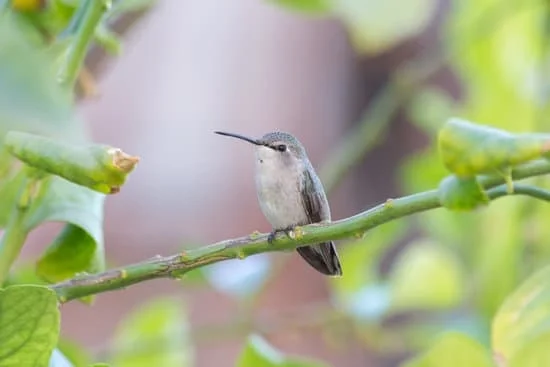Are you looking for gardening ideas for preschoolers? Introducing young children to the wonders of gardening can be a rewarding and educational experience. In this article, we will explore the benefits of gardening for preschoolers and the importance of starting them young. From choosing the right plants to engaging in sensory garden activities, there are many ways to introduce little ones to the joy of gardening.
Gardening offers numerous benefits for preschoolers, including hands-on learning, sensory exploration, and connecting with nature. It also teaches valuable life skills such as responsibility, patience, and environmental awareness. By starting them young, we can cultivate a lifelong appreciation for nature and encourage healthy habits from an early age. Whether you have a green thumb or are new to gardening yourself, there are plenty of age-appropriate activities that can be enjoyed by preschoolers in the garden.
In this section, we will discuss tips on selecting easy-to-grow plants and child-friendly varieties that are perfect for little gardeners. We will also explore age-appropriate tools and safety guidelines to ensure a fun and safe gardening experience for preschoolers. So let’s get started on this exciting journey of introducing gardening to our little ones.
Choosing the Right Plants
When it comes to choosing the right plants for preschoolers to cultivate, it’s important to select ones that are easy to grow and child-friendly. By introducing little ones to gardening with the right plants, you can help instill a love for nature and teach them valuable skills. Here are some tips for selecting the perfect plants for preschoolers:
- Choose fast-growing plants: Opt for plants that have a short growth cycle, so children can see the results of their efforts quickly. Sunflowers, radishes, and cherry tomatoes are excellent options.
- Pick sturdy plants: Select plants that are resilient and can withstand a little rough handling from curious preschoolers. Marigolds, pansies, and snapdragons are great choices.
- Consider sensory plants: Introduce plants with interesting textures, scents, or vibrant colors to engage children’s senses. Herbs like mint, lavender, and basil are perfect for this purpose.
In addition to choosing the right plants, it’s essential to involve preschoolers in the selection process. Show them different plant options and explain their characteristics so they can make choices based on their preferences. By involving them in the decision-making process, you can foster a sense of ownership and excitement about the garden.
Teaching preschoolers about the needs of different plants is also a valuable lesson. Explain how some need more sunlight while others thrive in shade, and demonstrate how to water them properly. Incorporating these lessons into gardening activities will not only teach kids about plant care but also help develop their responsibility and nurturing skills at a young age.
By following these tips for selecting easy-to-grow and child-friendly plants for preschoolers to cultivate, you can create an enjoyable and educational gardening experience for young children. Through this hands-on activity, they can learn about nature, responsibility, and patience while developing a deeper connection with the environment around them.
Garden Tools for Little Hands
When it comes to introducing preschoolers to the wonderful world of gardening, it’s important to provide them with the right tools that are safe and easy for their little hands to use. Here are some age-appropriate gardening tools and safety tips for preschoolers.
Age-Appropriate Tools
When selecting gardening tools for preschoolers, it’s crucial to consider their size, weight, and ease of use. Look for lightweight and durable tools specifically designed for children, such as small shovels, trowels, rakes, and watering cans. These tools are not only safe for little hands, but they also promote independence and confidence in young gardeners.
Safety Tips
Before letting preschoolers loose in the garden with their new tools, it’s important to establish some ground rules and safety guidelines. Teach them how to properly hold and use each tool, emphasizing the importance of being gentle and mindful of their surroundings. Always supervise young children while they are using garden tools to ensure they are using them safely.
Gardening Gloves
To protect preschooler’s hands from dirt, scratches, or potential allergens found in the soil, invest in a pair of child-sized gardening gloves. This will not only keep their hands clean but also teach them about the importance of protecting themselves while working in the garden.
By providing age-appropriate tools and teaching essential safety precautions, preschoolers can develop a love for gardening early on while learning valuable skills that will last a lifetime. These aspects contribute significantly to sparking an interest in nature through hands-on experience planting seeds or flowers in containers or directly into the soil.
Sensory Garden Ideas
Creating a sensory garden for preschoolers can be an enriching and educational experience. Engaging their senses of touch, smell, and sight can help children develop an appreciation for nature while stimulating their cognitive and sensory development. One of the easiest ways to start is by including plants with different textures, scents, and colors in the garden.
When selecting plants for a sensory garden, consider incorporating herbs like mint, lavender, and rosemary for their pleasant fragrances. Flowers such as sunflowers, marigolds, and pansies can provide a colorful visual display. Additionally, plants with varying textures such as lamb’s ear or ornamental grasses can add tactile interest to the garden. These plant choices will not only engage the senses but also encourage exploration and curiosity among preschoolers.
Incorporating non-plant elements in the sensory garden is equally important. Installing wind chimes or small water features can create soothing sounds that enhance the auditory experience. Furthermore, adding pathways made of different materials like smooth stones or wood chips allows children to feel different textures under their feet as they explore the garden.
Finally, consider creating designated areas within the sensory garden for specific sensory experiences. For example, a “smell zone” with fragrant plants or an “exploration zone” with various textured plants can provide focused opportunities for preschoolers to engage their senses in a structured way.
| Sensory Element | Recommended Plants/Features |
|---|---|
| Touch | Lamb’s ear, ornamental grasses |
| Smell | Mint, lavender, rosemary |
| Sight | Sunflowers, marigolds, pansies |
| Hearing | Wind chimes, small water features |
By creating a sensory garden tailored to preschoolers’ developmental needs and interests, caregivers and educators can foster a love for nature and gardening while providing valuable learning experiences alongside fun activities.
DIY Garden Crafts
Gardening is a wonderful way for preschoolers to connect with nature and learn valuable skills. In addition to planting and caring for plants, there are also plenty of opportunities for fun and creativity through DIY garden crafts using natural materials found in the garden. These activities not only foster a love for gardening but also encourage sensory exploration and fine motor skill development in young children.
One popular DIY garden craft for preschoolers is creating leaf rubbings. With some paper and crayons, children can take a nature walk to collect different types of leaves. Then, they can place the leaves under the paper and use the side of a crayon to rub over them, revealing the intricate details of each leaf on the paper. This activity not only allows preschoolers to appreciate the beauty of nature but also teaches them about different leaf shapes and textures.
Another engaging garden craft for preschoolers is making flower crowns. With an assortment of flowers, leaves, and thin flexible branches or vines from the garden, children can create their own beautiful crowns by threading the natural materials together. This activity encourages creativity and imagination while connecting children with the natural world around them.
Creating bird feeders from pinecones is another enjoyable DIY garden craft for preschoolers. By spreading peanut butter on pinecones and then rolling them in birdseed, children can make a simple yet effective feeder to hang in the garden. Not only does this project allow preschoolers to observe birds in their habitat, but it also fosters an understanding of wildlife and their needs.
Overall, these DIY garden crafts provide a hands-on way for preschoolers to engage with nature while developing important skills. By incorporating these activities into gardening experiences, children can further enhance their appreciation for the environment and gain valuable knowledge about plants and animals.
| Garden Craft Ideas | Description |
|---|---|
| Leaf Rubbings | Create beautiful imprints of leaves using crayons and paper |
| Flower Crowns | Using flowers from the garden to make creative headwear |
| Bird Feeders | Pinecone bird feeders made with peanut butter and birdseed |
Garden Games
When it comes to gardening ideas for preschoolers, incorporating fun and educational games into the garden can be a great way to engage young children while teaching them about nature. There are plenty of creative activities that can be enjoyed in the garden, providing opportunities for learning and exploration. Here are some ideas for garden games that preschoolers will love:
Nature Scavenger Hunt
One exciting game for preschoolers in the garden is a nature scavenger hunt. Create a list of items commonly found in the garden, such as different types of leaves, flowers, or insects. Give each child a small bag or basket to collect their treasures and encourage them to explore the garden while searching for all the items on their list. This activity not only promotes outdoor play but also helps children develop an appreciation for nature.
Plant Identification Game
Another engaging game is a plant identification challenge. Gather several potted plants or plant pictures and place them around the garden. Provide each child with a card or sheet of paper listing the names of the plants and ask them to match each plant with its corresponding name. This activity not only teaches children about different types of plants but also helps improve their observation skills.
Garden Obstacle Course
Creating a garden obstacle course can be an entertaining way for preschoolers to burn off energy while learning about their surroundings. Use different natural elements such as stepping stones, tunnels made from bushes, or even small hurdles made from branches to create an exciting course within the garden. This active game encourages physical movement and coordination while allowing kids to appreciate the beauty of their surroundings.
These simple yet effective garden games provide opportunities for preschoolers to enjoy outdoor activities while learning about nature. Incorporating these games into gardening activities can help foster a love for nature at an early age, encouraging children to develop vital skills like observation, physical coordination, and problem-solving abilities through hands-on experiences in the garden.
Growing Food
Introducing preschoolers to the world of gardening can be an incredibly enriching and educational experience. Not only does it allow them to have hands-on learning about nature, but it also teaches them responsibility and patience. One aspect of gardening that can be particularly rewarding for preschoolers is growing their own fruits and vegetables. This activity not only exposes them to the process of plant growth but also encourages healthy eating habits at a young age.
When choosing which fruits and vegetables to grow with preschoolers, it’s important to consider options that are easy to maintain and quick to yield results. Some popular choices for easy-to-grow plants include cherry tomatoes, strawberries, snap peas, and lettuce. These plants are relatively low-maintenance and tend to produce relatively quickly, keeping the attention and interest of young children.
In addition to being able to witness the growth process from seed to harvest, growing food with preschoolers provides an opportunity for them to learn about where their food comes from and the importance of fresh produce in a balanced diet. By involving them in the entire process – from planting the seeds or seedlings to caring for the plants and eventually harvesting the fruits or vegetables – they gain a deeper appreciation for the food on their plate.
Overall, introducing preschoolers to growing their own food through gardening can foster a lifelong love for wholesome eating habits while also teaching essential skills in plant care and cultivation. These are just some gardening ideas for preschoolers that can be both fun and educational.
Garden Care and Maintenance
Teaching preschoolers about caring for their garden is an essential aspect of gardening that helps them develop a sense of responsibility and respect for nature. By involving children in the care and maintenance of their garden, they not only learn practical skills but also gain a deeper understanding and appreciation for the natural world around them.
One effective way to introduce preschoolers to garden care is by demonstrating how to water plants properly. Show them how to use a small watering can or a gentle spray from a hose to water the soil around the base of each plant.
Teach them to observe the plants and soil to determine if they need watering, explaining that dry soil means it’s time to water while damp soil means they should wait. Encouraging children to take turns watering the garden will give them a sense of ownership and pride in nurturing their plants.
Another important aspect of garden care is teaching preschoolers about weeding. Explain that weeds are unwanted plants that can compete with their flowers or vegetables for nutrients, sunlight, and water. Demonstrate how to carefully pull out weeds by gently grasping the stem near the soil and pulling upward, making sure to remove the entire plant, roots and all. Emphasize the importance of being careful not to disturb or damage the surrounding plants while weeding.
As part of teaching preschoolers about gardening, involving them in garden care and maintenance provides valuable lessons on nurturing living things, accountability for tasks, and an understanding of cause and effect in nature. Plus, it fosters a love for gardening as they witness their efforts contributing to the healthy growth of their plants.
By empowering preschoolers with these skills early on, they are likely to carry this knowledge into adulthood and develop a lifelong passion for gardening. Overall, integrating garden care into educational activities creates meaningful experiences that have lasting impacts on young minds.
Conclusion
In conclusion, gardening can be a valuable and enriching activity for preschoolers. It provides numerous benefits for their physical, mental, and emotional development. By introducing children to gardening at a young age, they can develop a love for nature and learn essential skills that will stay with them throughout their lives.
Engaging in gardening activities allows preschoolers to learn about responsibility, patience, and the cycle of life. As they care for their plants and witness their growth, they develop important nurturing skills and a sense of accomplishment. Additionally, gardening fosters an appreciation for the environment and encourages children to connect with the natural world around them.
Through gardening ideas for preschoolers, such as choosing the right plants, creating sensory gardens, and engaging in garden games and crafts, children can explore their creativity, fine-tune their motor skills, and engage all of their senses. This hands-on experience not only makes learning fun but also helps them understand various scientific concepts such as plant growth, pollination, and ecosystems.
Incorporating gardening into preschool education can have long-lasting effects on a child’s development. It instills important values while encouraging curiosity and exploration. As such, it is clear that introducing gardening to preschoolers is an investment in their overall well-being and future success. By providing them with the opportunity to connect with nature in this meaningful way at an early age, we are equipping them with skills that will serve them well into adulthood.
Frequently Asked Questions
What Does Gardening Teach a Child?
Gardening teaches a child responsibility and patience as they care for plants and watch them grow. It also helps them understand the importance of nurturing living things and the environment.
How to Design a Garden for Kids?
Designing a garden for kids involves choosing colorful flowers and plants, creating pathways and hidden spaces for exploration, and incorporating child-friendly features like a small play area or a vegetable patch they can tend to.
How Do I Garden With My 2 Year Old?
Gardening with a 2 year old can be a fun and educational experience. Keep it simple by starting with easy-to-grow plants, involving them in watering and gentle tasks, and turning the gardening experience into a sensory adventure by letting them touch, smell, and explore various plants.

Welcome to my gardening blog! I am passionate about plants and enjoy sharing my knowledge and experiences with others. In this blog, I will write about everything related to gardening, from tips on how to get started to updates on my own garden projects.





